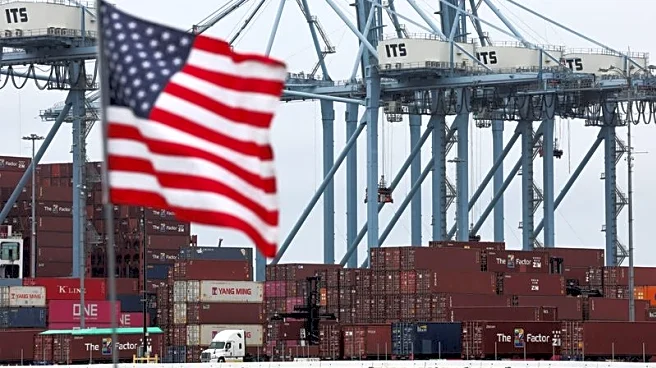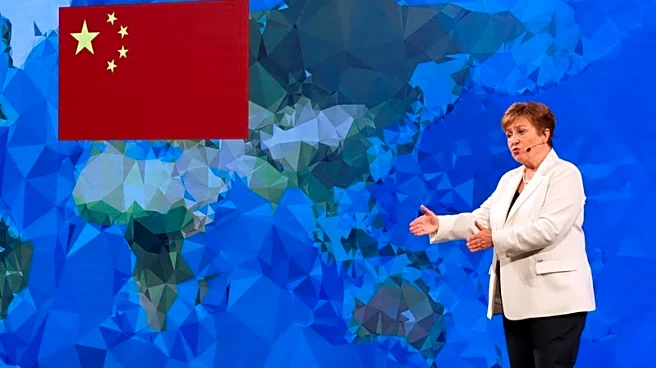What's Happening?
OPEC has released a report indicating that the global oil supply is expected to closely match demand in 2026, as the OPEC+ group increases production. This marks a shift from last month's outlook, which projected a supply shortfall. The Organization of the Petroleum Exporting Countries, along with Russia and other allies, has decided to unwind some output cuts more rapidly than planned, adding more crude to the market. This move has raised concerns about a potential surplus, affecting oil prices throughout the year. OPEC's report maintains forecasts for global oil demand to rise by 1.3 million barrels per day this year, with a slightly faster rate expected in 2026. The report also highlights robust global economic dynamics, with upward revisions to growth in the U.S. and Japan, and strong data from India and China.
Why It's Important?
The increase in production by OPEC+ could have significant implications for global oil markets and economies. By narrowing the projected supply deficit, OPEC+ aims to regain market share, potentially stabilizing oil prices. However, the risk of oversupply remains, which could lead to lower prices and impact oil-dependent economies. The revised outlook also narrows the gap between OPEC's projections and those of other forecasters, such as the International Energy Agency, which anticipates a supply surplus in 2026. This development could influence energy policies and investment decisions in the U.S. and other major oil-consuming countries, as they navigate the balance between energy transition goals and market realities.
What's Next?
OPEC+ will continue to monitor market conditions and adjust production levels as necessary to maintain balance. The group's decisions will be closely watched by industry stakeholders, including oil companies and governments, as they assess the impact on prices and supply chains. The International Energy Agency is scheduled to update its forecasts soon, which may provide further insights into the global oil market dynamics. Additionally, U.S. energy companies may need to strategize around potential oversupply scenarios, considering both short-term and long-term market trends.
Beyond the Headlines
The ongoing adjustments in OPEC+ production levels highlight the complex interplay between geopolitical factors, market demands, and environmental considerations. As countries strive to meet climate goals, the reliance on fossil fuels remains a contentious issue. The potential oversupply could accelerate discussions on energy transition and the role of renewable sources in reducing dependency on oil. Furthermore, the economic implications for oil-exporting nations could lead to shifts in international relations and trade agreements.












